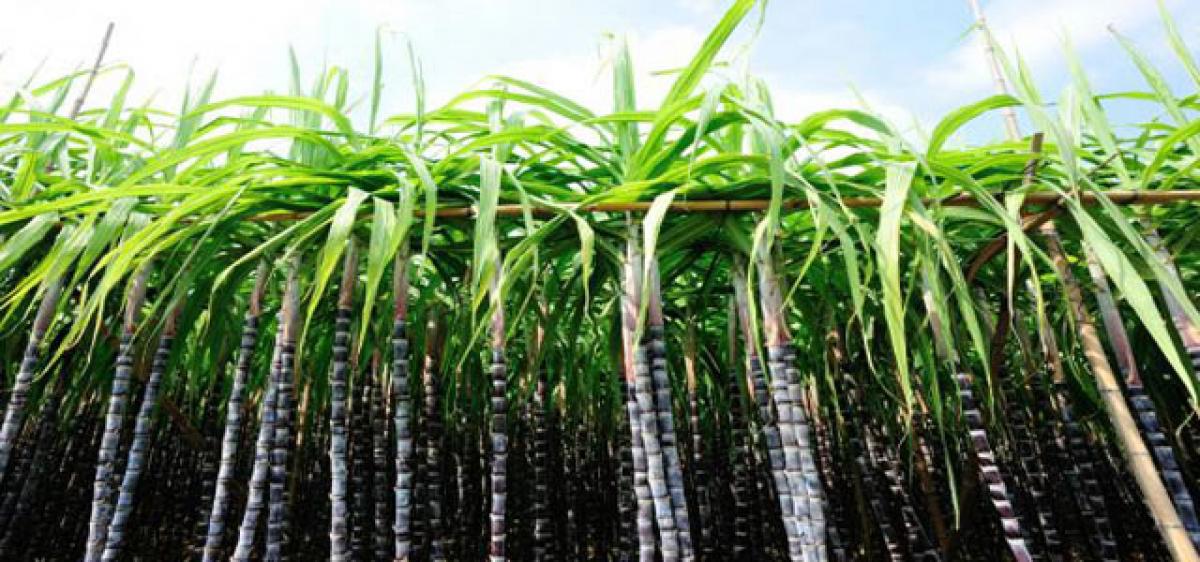Live
- Mentally challenged beaten up as suspected child thief in UP
- RSS, BJP want to make hatred key mantra of democracy: Priyanka
- Dharur Ravi condemns BJP leader for threat to Rahul Gandhi
- Cong’s seven guarantees include MSP, caste survey
- Abhaya Hastam docus distributed
- Temple authorities have no patent rights on Bhadradri shrine
- Bhadradri head priest suspended for cover-up
- Tejas Jr College students selected for junior athletic tourney
- Fighting as independent on public demand: Savitri Jindal
- Case against Maharashtra MLA for remarks on Rahul Gandhi
Just In

By adopting ‘durapusalla’ method, the farmers are growing sugarcane suitable for mechanisation. Amid the gaps in the crop onion, potato, cabbage and tomato could be grown using a small tractor, explained scientist T Prabhakar Reddy.
Nizamabad: Thanks to the efforts of the scientists of Rudrur Regional Sugarcane Research Centre in this district, farmers are able to produce better quality sugarcane using less seed material, less fertilisers and incurring less labour costs than the traditional method.
By adopting ‘durapusalla’ method, the farmers are growing sugarcane suitable for mechanisation. Amid the gaps in the crop onion, potato, cabbage and tomato could be grown using a small tractor, explained scientist T Prabhakar Reddy.
Speaking to The Hans India here on Friday, he said that the farmers were able to get a yield of 50 tonnes per acre, using drip irrigation for achieving the maximum benefit . They use the motor speed drip system which facilitates direct spraying of water mixed with fertilizer, thus preventing 40 to 50 per cent wastage of water. Fertilizer is also not wasted.
Reddy advises the farmers not to burn their waste material, including leaves, in their fields hoping to kill pests and disease-causing insects, citing the recent example of smoke enveloping New Delhi after sugarcane leaf waste was burnt.
As this method affects health, he advocates the disposal of organic method waste disposal by cutting it into bits and leaving in the soil. This will give strength to the soil, by increasing the water content from 3.2 to 16 per cent and reducing the insect damage by 27 per cent. This method also results in getting 20 per cent more output.
The scientist points out that normally four tonnes of waste in an acre is generated. He said that the waste should be spread out in the field and allowed to decay and used as fertilizer (after the addition of eight kg urea and 20 kg of super phosphate to the waste after rain).
Before spreading out the waste, 25 kg of Methyl Parathion should be added. The addition of the two chemicals will expedite the decaying process. This method would not only result in the soil becoming better and strong, but also kills insects and prevents environmental pollution when the waste is burnt, he added.

© 2024 Hyderabad Media House Limited/The Hans India. All rights reserved. Powered by hocalwire.com







